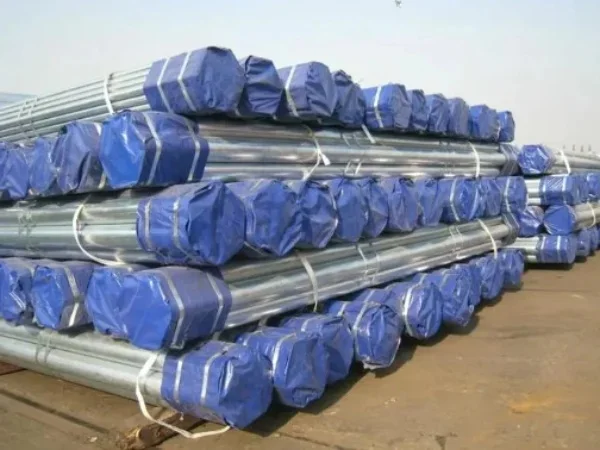The welding process of welded steel pipe
Welding steel pipe is a common metalworking method that joins two or more steel pipes together to form a larger structure. Welded steel pipes are used in a wide range of applications, including construction, automotive, aerospace, petrochemical, and other fields. In the process of welding steel pipes, it is necessary to adopt a suitable welding process to ensure welding quality and safety.

Selection of welding process
Before welding the steel pipe, it is necessary to select a suitable welding process according to the material, wall thickness, diameter, welding position, and other factors of the steel pipe. Common welding processes include manual arc welding, gas-shielded welding, submerged arc welding, plasma welding, laser welding, etc. Different welding processes have different characteristics and scopes of application and need to be selected according to specific conditions.
Manual arc welding
Manual arc welding is a common welding process suitable for welding smaller steel pipes. When performing manual arc welding, an arc welder and electrodes are used. A welding rod is a metal rod that welds steel pipes together by the heat of an electric arc. The advantages of manual arc welding are simple operation and low cost, but the welding quality and efficiency are low.
Gas shielded welding
Gas-shielded welding is an efficient, high-quality welding process suitable for welding larger steel pipes. When performing gas-shielded welding, it is necessary to use inert gases such as argon or carbon dioxide for protection to prevent oxidation and contamination of the welding area. The advantages of gas-shielded welding are high welding quality, beautiful weld seam, and fast welding speed, but the equipment cost is relatively high.
Submerged arc welding
Submerged arc welding is an efficient, high-quality welding process suitable for welding larger steel pipes. When performing submerged arc welding, a submerged arc welding machine and welding wire are required. Welding wire is a wire that is used to weld steel pipes together by the heat of an electric arc. The advantages of submerged arc welding are high welding quality, beautiful weld seam, and fast welding speed, but the equipment cost is relatively high.
Plasma welding
Plasma welding is a high-energy-density welding process, suitable for welding high-strength, high-temperature steel pipes. When performing plasma welding, a plasma welder and a plasma gun are required. Plasma guns weld steel pipes together with high-energy plasma. The advantages of plasma welding are high welding quality, beautiful weld seams, and fast welding speed, but the equipment cost is relatively high.
Laser welding
Laser welding is a high-precision, high-efficiency welding process, suitable for welding high-precision, high-quality steel pipes. When performing laser welding, a laser welder and a laser beam are used. The laser beam welds steel pipes together with a high-energy laser. The advantages of laser welding are high welding quality, beautiful weld seam, fast welding speed, and high precision, but the equipment cost is very high.
Hand welding: Hand welding is a common welding process. The arc length depends on the gap between the metal electrode and the steel plate. In addition, when used as an arc carrier, the metal electrode is the raw material for welding.
Welding steel pipe is a common metal processing method. It is necessary to select a suitable welding process and follow certain operating steps to ensure welding quality and safety. Different welding processes have different characteristics and scope of application and need to be selected according to specific conditions. In the process of welding steel pipes, it is necessary to pay attention to safety matters to avoid accidents.
Methods to eliminate welding residual stress
Easy to ignore problems in steel pipe welding
Common defects and prevention of high frequency welded pipe
How to avoid common welding defects
Causes and preventive measures of local deformation in welding
How to control the hardness of the weld during welding?
What are the factors that affect the quality of high-frequency welded pipe?






